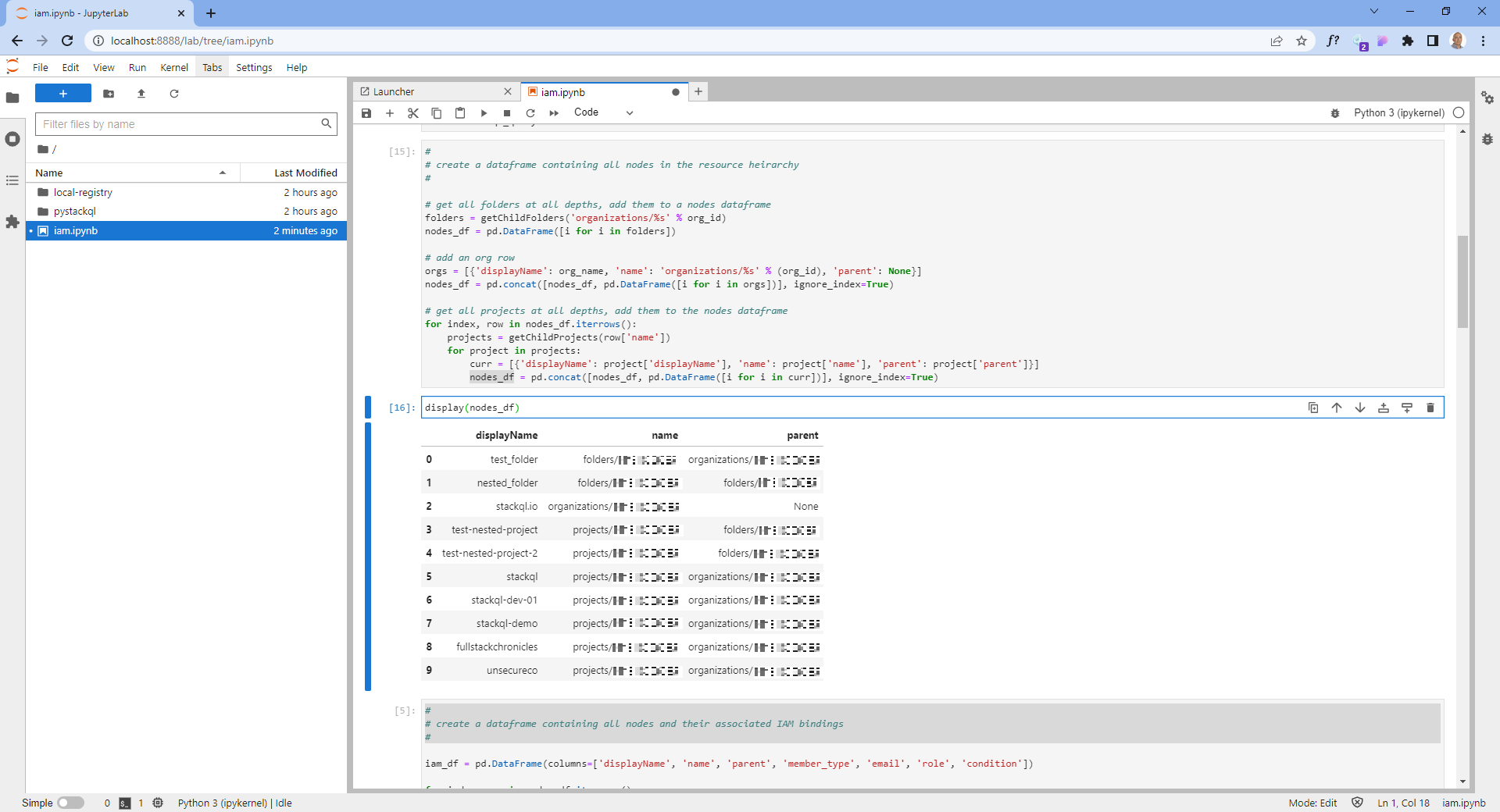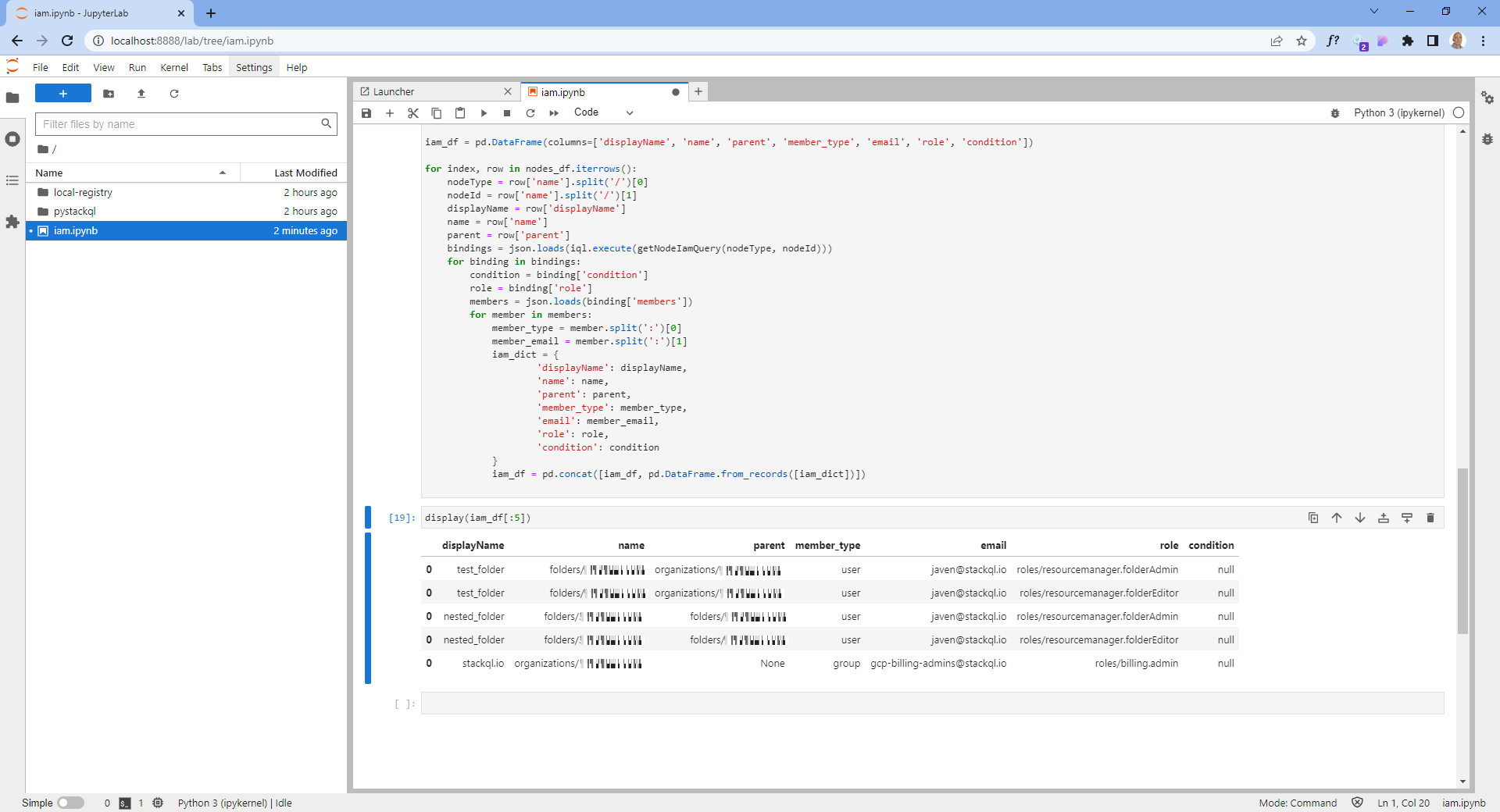Google Provider Update - December 2025
We've released a major update to the StackQL Google provider with a new service, enhanced AI/ML capabilities, and improvements across 177 service files.
New Service: Speech-to-Text v2
The speechv2 service brings Cloud Speech-to-Text API v2 to StackQL with 6 resources:
| Resource | Description |
|---|---|
recognizers | Manage speech recognition configurations with create, list, get, patch, delete, undelete, recognize, and batch_recognize methods |
custom_classes | Create custom vocabulary classes for improved recognition accuracy |
phrase_sets | Define phrase hints to boost recognition of specific terms |
config | Manage location-level Speech-to-Text configuration |
locations | Query available service locations |
operations | Track long-running operations |
Key features include support for multiple audio encodings (WAV, FLAC, MP3, OGG, WebM, MP4/AAC), translation capabilities, denoiser config, and KMS encryption support.
Vertex AI / AI Platform
The largest update in this release with 87,000+ line changes introduces powerful new RAG and evaluation capabilities:
- RAG Resources:
rag_corpora,rag_files,rag_engine_configfor Retrieval-Augmented Generation - Conversational AI: New
chatresource - Model Evaluation:
evaluation_setsandevaluation_itemsfor systematic model assessment - New Resources:
science,invoke, andopenapiresources - Performance: Enhanced
cache_configfor caching configurations
Discovery Engine
Major enhancements (50,000+ line changes) for search and conversational AI:
- New
assistantsresource - New
sitemapsresource for site search - New
custom_modelsresource - Enhanced
sessionsandanswersfor conversational search - New
authorized_viewsandauthorized_view_setsfor access control
Contact Center AI Insights
Quality assurance and analytics improvements (20,000+ line changes):
- New
qa_questionsandqa_question_tagsfor quality assurance workflows - New
analysis_rulesresource - New
segmentsresource - New
authorized_viewswith IAM policy support - New
datasetsandviewsresources
BigQuery
Enhanced governance and access control (18,000+ line changes):
- New
routines_iam_policiesfor stored procedure/function IAM - Enhanced
row_access_policies
Healthcare API
Expanded metrics and data mapping (15,000+ line changes):
- New
data_mapper_workspaces_iam_policies - Enhanced metrics:
hl7_v2_store_metrics,dicom_store_metrics,series_metrics,study_metrics - New
instances_storage_inforesource
Cloud Spanner
Backup and security enhancements (14,000+ line changes):
- New
backup_scheduleswith IAM support - New
databases_split_pointsresource - New
database_roleswith IAM policies
Cloud SQL Admin
New integration and management features (12,000+ line changes):
- New
instances_entra_id_certificatefor Microsoft Entra ID integration - New
instances_disk_shrink_config - New
instances_latest_recovery_time
GKE On-Prem
Enhanced IAM across VMware and Bare Metal clusters (9,000+ line changes):
- Enhanced VMware cluster resources with IAM policies
- Enhanced Bare Metal cluster resources with IAM policies
- New
vmware_node_poolsandbare_metal_node_poolswith IAM
Developer Connect
Git integration improvements (3,500+ line changes):
- New
git_repository_links_git_refsresource - New
users_selfandusers_access_tokenresources - New token resources:
read_token,read_write_token
Text-to-Speech
Enhanced voices and text resources with new capabilities.
Get Started
Update to the latest Google provider:
stackql registry pull google
Let us know your thoughts! Visit us and give us a star on GitHub.

